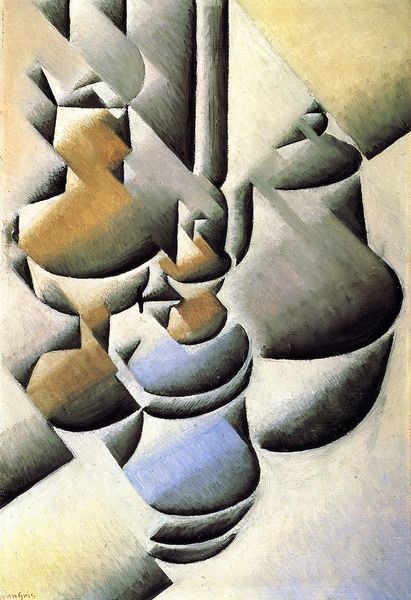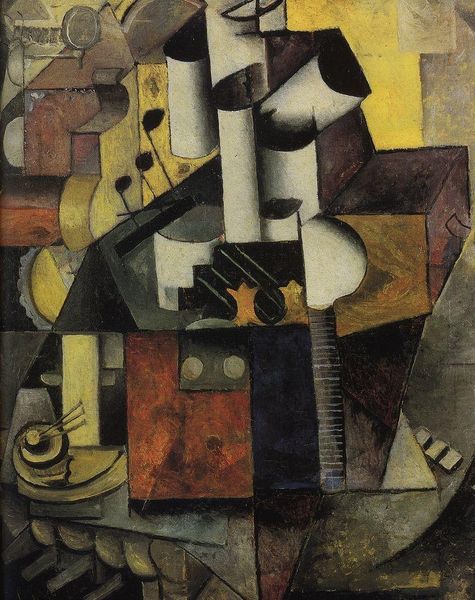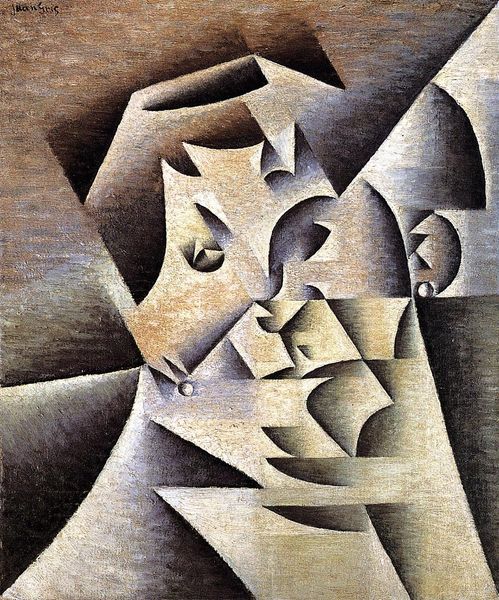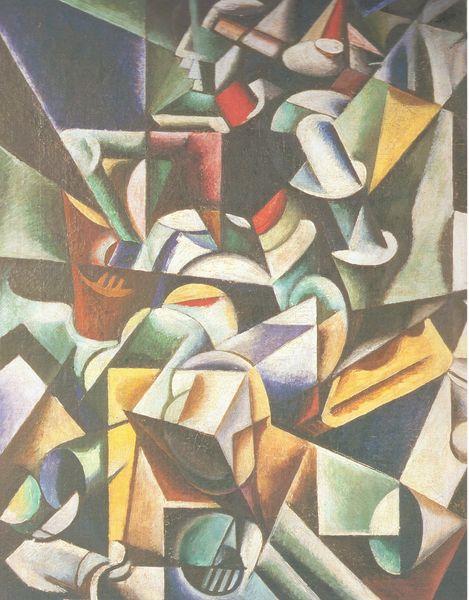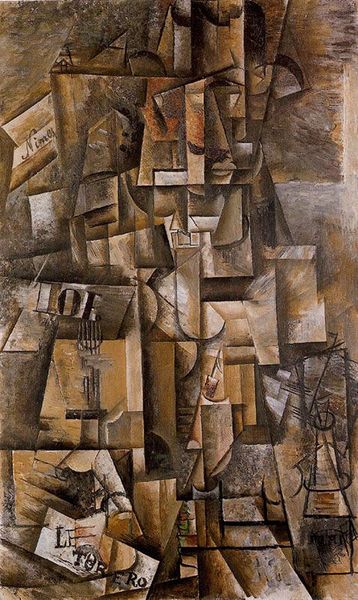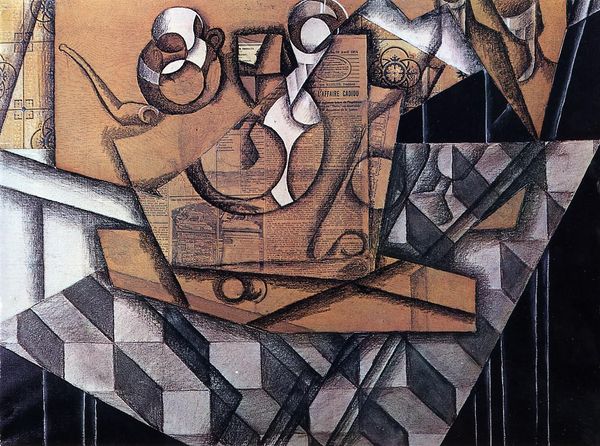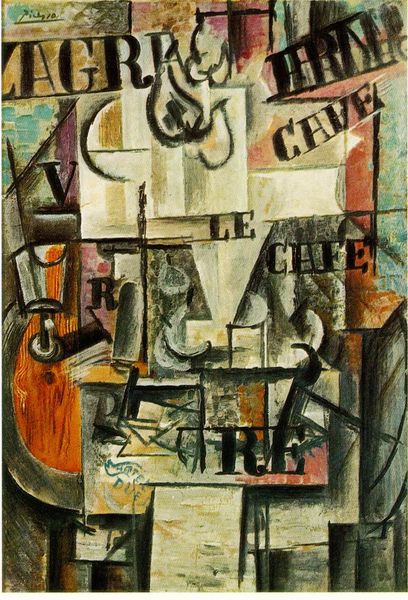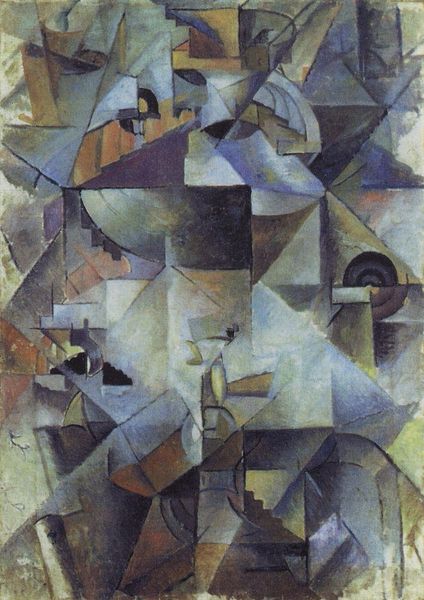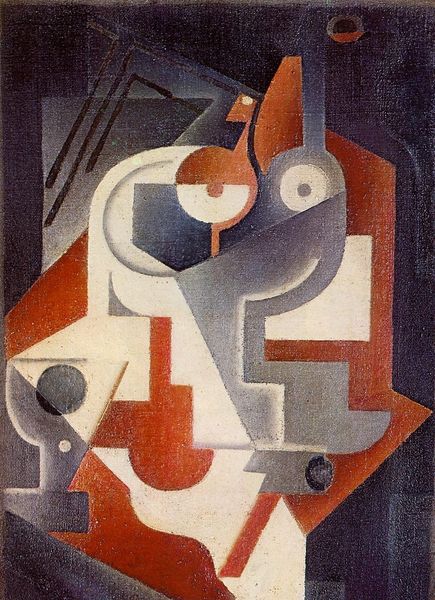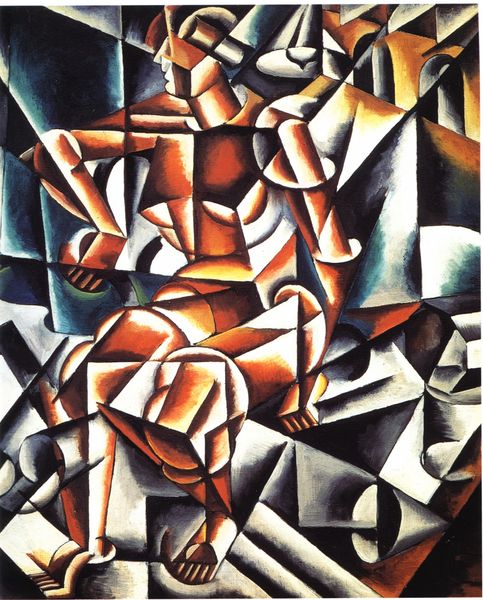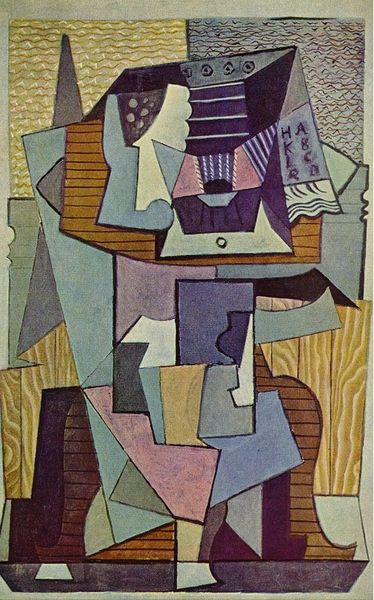
#
natural stone pattern
#
abstract painting
#
egg art
#
pop art
#
animal print
#
tile art
#
fluid art
#
acrylic on canvas
#
spray can art
#
3d art
Dimensions: 112.1 x 70.2 cm
Copyright: Public domain
Curator: Juan Gris's "Still Life with Flowers," completed in 1912 and residing here at MoMA, offers a compelling exercise in analytical cubism. Editor: My immediate response is one of fragmentation; a breaking apart of expected forms into geometric components. There's an almost violent deconstruction at play. Curator: Absolutely. Look how Gris methodically dissects the familiar still life genre. Notice the flattening of space and the reduction of objects—flowers, a guitar—into facets. It’s not just about representing these items but presenting their essential forms simultaneously from multiple viewpoints. Editor: But this is also where we must ask, “What’s being fragmented here, beyond just forms?” The early 20th century saw tremendous societal shifts. This artistic fragmentation mirrors the breaking down of old social orders, the questioning of singular perspectives in favor of multiple, intersecting narratives. Curator: An intriguing interpretation! Formally, however, the subdued palette deserves attention, mostly blues, greys, and browns. This restricted range allows us to focus intently on the underlying structure and intellectual rigor of the composition, it’s less about vibrant color and more about shape and form. Editor: Yet, even within these subdued colors, there's an echo of class dynamics. The flowers themselves, usually symbols of luxury and leisure, are here rendered in a somewhat sterile, almost clinical fashion, perhaps commenting on the increasing industrialization of even the most traditionally "natural" aspects of life. Curator: Consider also the tension created by Gris's delicate balance between abstraction and representation. The guitar, though fractured, remains recognizably a guitar. The flowers still imply a floral arrangement. This tension pulls the viewer into a space between recognition and conceptual understanding. Editor: This dance between abstraction and recognition highlights the era's search for new visual languages that reflected its multifaceted nature, it’s more than visual representation; it’s an exploration of how we perceive and categorize reality through constructed perspectives. Curator: Studying “Still Life with Flowers” offers insight into the formal ingenuity of cubism and Gris’s precise exploration of its potentials. Editor: And understanding the work means acknowledging its broader cultural context and implications within narratives of identity and change.
Comments
No comments
Be the first to comment and join the conversation on the ultimate creative platform.
